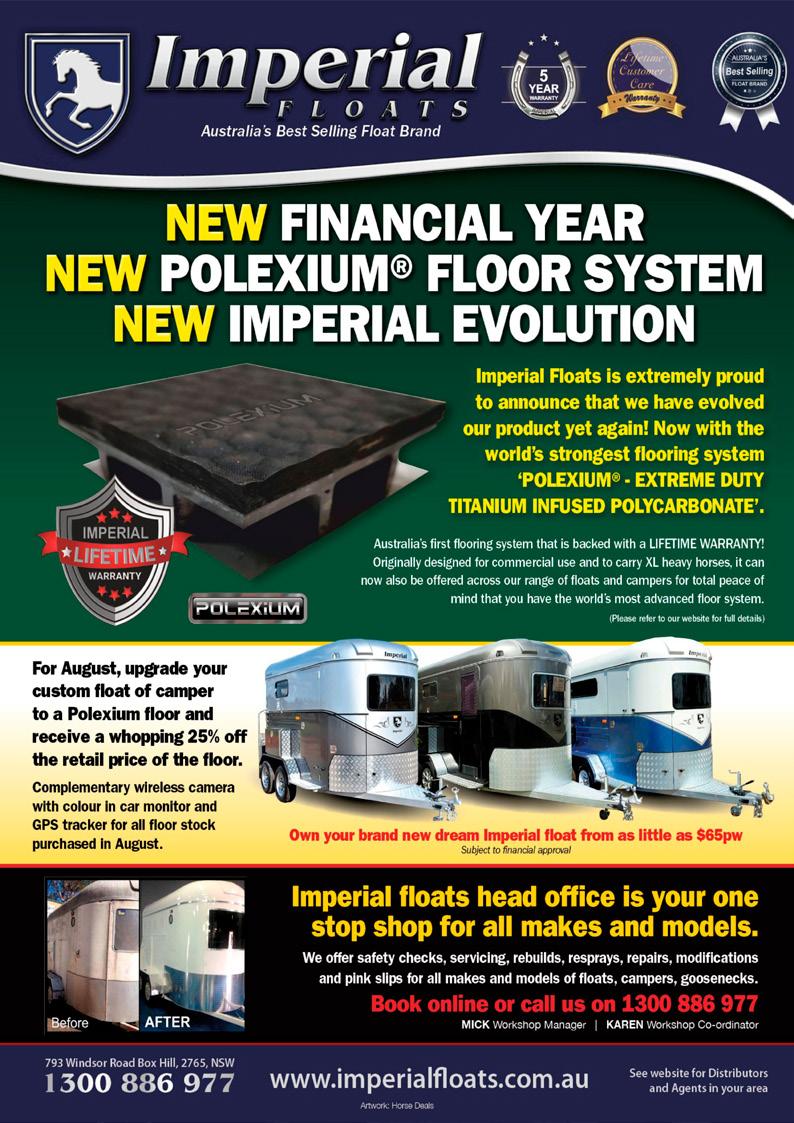
6 minute read
Para horses need pizazz
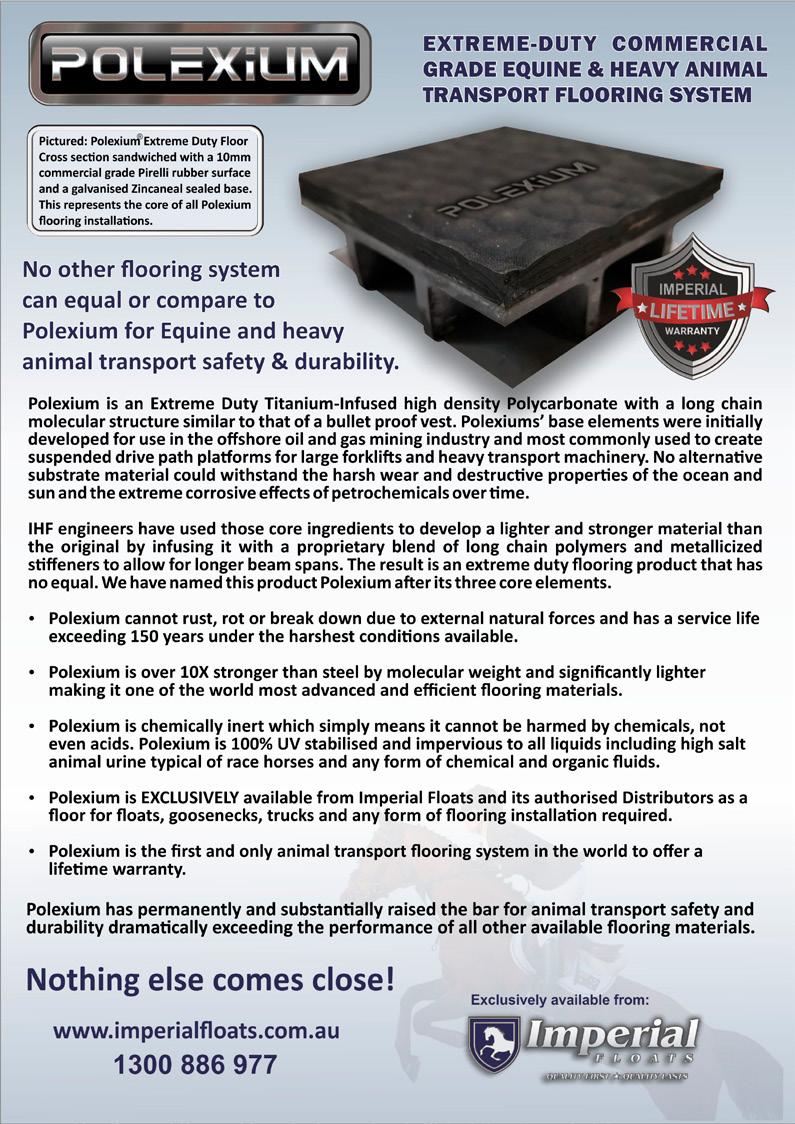
FEATURE
When you think about it, a good Paralympic dressage horse must have something a little special in their make-up. But what is it? CHRISTINE ARMISHAW investigates.
Agood horse must have pizazz. That’s what Paralympian Emma Booth tells me. But finding the perfect horse is no mean feat, especially when it’s a Para-horse.
People always tell you never to buy the first horse you see, but perhaps if you know precisely what you are looking for, that’s exactly what you should do. Or, perhaps if you can’t actually see the horse, then that advice doesn’t count at all.
For example, blind dressage rider SueEllen Lovett simply knew she’d met her match when she found her dream horse, Johno. With the help of her mother-inlaw, the born-in-the-saddle Paralympian spent four months trawling through horse ads online. “I went through hundreds of ads that my phone read aloud to me. I would pick out the ones that sounded good, then my mother-inlaw helped by looking at the endless photos and videos. We must have gone through over 70 horses,” says Sue-Ellen.
When they came across Johno, they drove six hours south from Dubbo to see him, close to where her trainer, Jose Mendez, is based on the Southern Tablelands of NSW.
Johno was one horse in a stable of 150, but Sue-Ellen wasn’t interested in any of the others. She was left to her own devices while she took him for a test ride, but Johno was flawless. “Everyone else just stood around talking, they didn’t even tell me if there was anything for the horse to spook at or to crash into! We were on our own,” Sue-Ellen says with a laugh. “He was the first horse I tried. I rode him for 25 minutes and something just clicked, something magic happened.”
Sue-Ellen couldn’t afford Johno and was trying to think of every possible way to make it happen. It turned out that her husband, Matthew, could see the spark that had ignited between the pair, and was busy phoning the horse’s owner while giving thumbs-up signals to his mother (none of which Sue-Ellen was aware of), all the while leading Sue-Ellen to believe that purchasing Johno just wasn’t possible.
Then the impossible happened. “He bought him for me! Matthew bought Johno to look after me,” an emotional Sue-Ellen tells me through happy tears, “no-one has ever done anything like that for me before.”
Katie Umback, who has multiple sclerosis (MS), had a hunt on her hands too, when her 2016 Rio Paralympic partner Gronskovlunds Marquis retired. After a solid six months of looking, Katie ultimately found a larger version of Marquis in the form of Ambathalia Cellini (Benny), who was located at the opposite end of the country. “I’m based at the bottom of NSW and Benny was in Far North Queensland,” Katie tells me. “He was still with Lesleigh Kruse who’d bred him. He’d been with her on the same property his whole life.”
Benny took a three-day truck trip down to his new home with Katie. When he arrived he didn’t even know what grass was. He’d been on red sand for most of his life and suddenly found himself in lush, Victorian pasture. “It took him a while to realise the stuff he was standing in was food,”
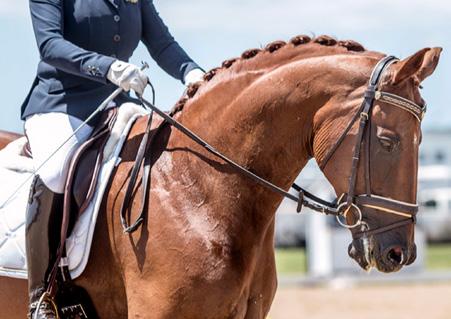
MAIN: It’s always good to take time out for a chat - Emma, Zidane and a canine friend (Image courtesy Emma Booth).
FACING PAGE: Katie and Ambathalia Cellini getting ready for the qualifying event for 2020 Tokyo Olympics (Image courtesy Katie Umback).
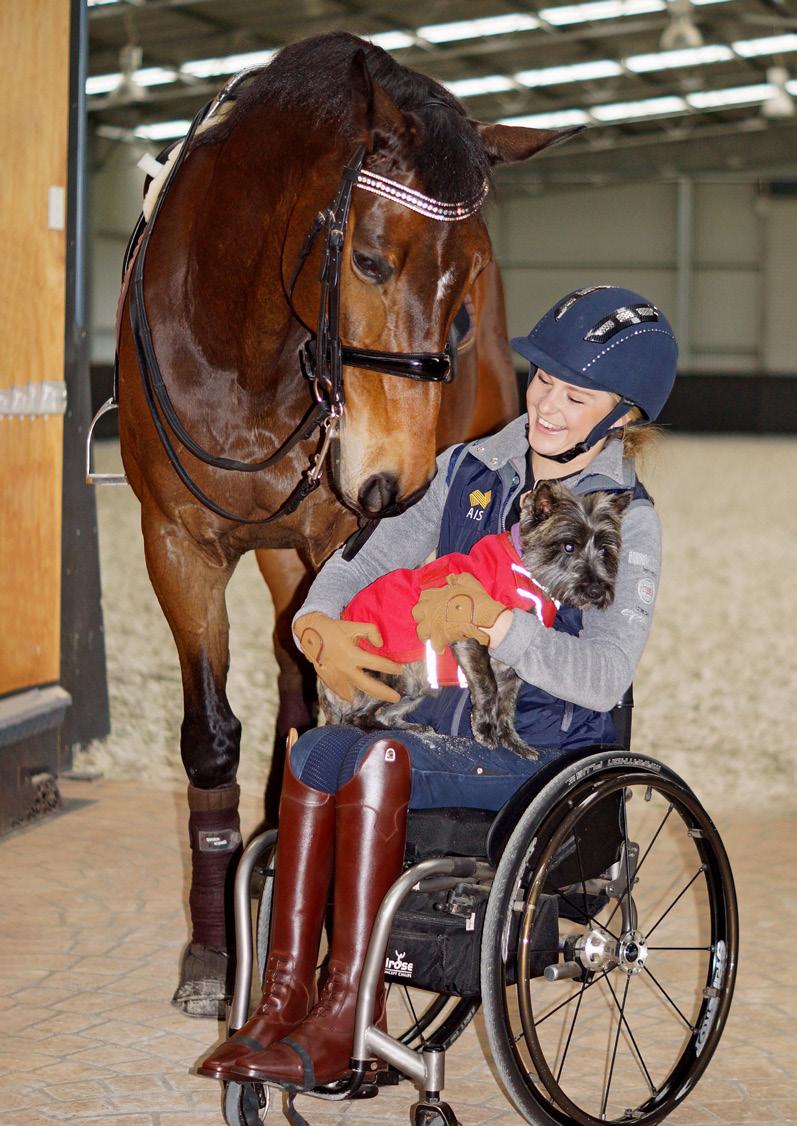
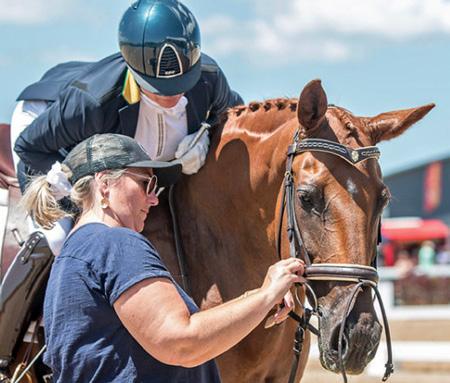
says Katie, “now, he loves grass!”
But fellow Paralympian, Emma Booth, has to take the horse-hunt cake. An exhaustive 12 month search sent Emma to nearly every state in Australia and across the globe twice to the Netherlands and Germany.
The paraplegic rider was looking for a partner for the 2016 Rio Paralympics. She sat on and tried over 50 horses, along with countless others that she viewed online. “With just three weeks left until the second Rio qualifying event, it looked like we weren’t going to have a horse and Rio wasn’t going to happen,” says Emma.
But then the tables turned. With the help of her trainer, Lone Joergens, Emma found Mogelzangs Zidane, only 25 minutes down the road from her home!
The pay-offs began just three weeks later, when she and Zidane won their first competition at Boneo Park. “It was the second qualifying event for Rio,” recounts Emma. “We broke the record for the highest FEI freestyle dressage score of any Australian rider, including both Para and able-bodied riders, with a score of 79 per cent. After that I thought oh, OK, I think Rio might be happening!”
So what is it that these horses had that all the others did not? All three riders agree that a Para-horse needs an exceptional temperament, ability coupled with expressive movement, soundness, willingness, and that little something extra … pizazz!
These incredible horsewomen appear to be using the same guidebook when it comes to picking the perfect Para-pony. Firstly, they’re big horses, really big. Emma’s 18-year-old Danish Warmblood, Zidane, is the smallest, coming in at a solid 16.2hh. Katie’s 11-year-old German Warmblood, Benny, is next in at 17hh, while Sue-Ellen’s 9-year-old Hanovarian, Johno, towers at a whopping 18.3hh. ABOVE: Emma Booth and Judy Fasher (former EA Chair) at the 2018 Boneo Classic (Image by Stephen Mowbray).
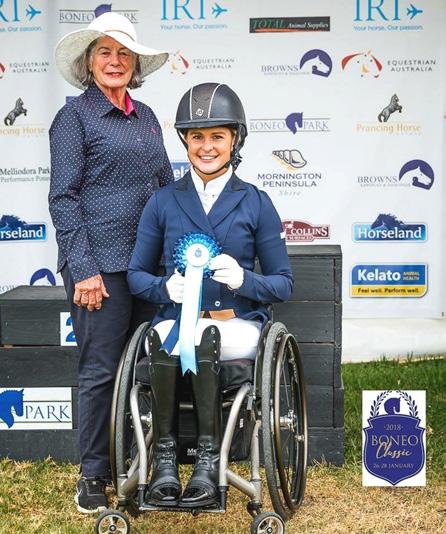
Katie and the spectacular Ambathalia Cellini, better known as Benny (Image courtesy Katie Umback).
MAIN AND RIGHT: Johno and Sue-Ellen (Images by Prue Crichton, 2C Photography). get that good movement,” explains Katie, “I’d love one in a smaller package, but they just don’t come in that size for what I need.”
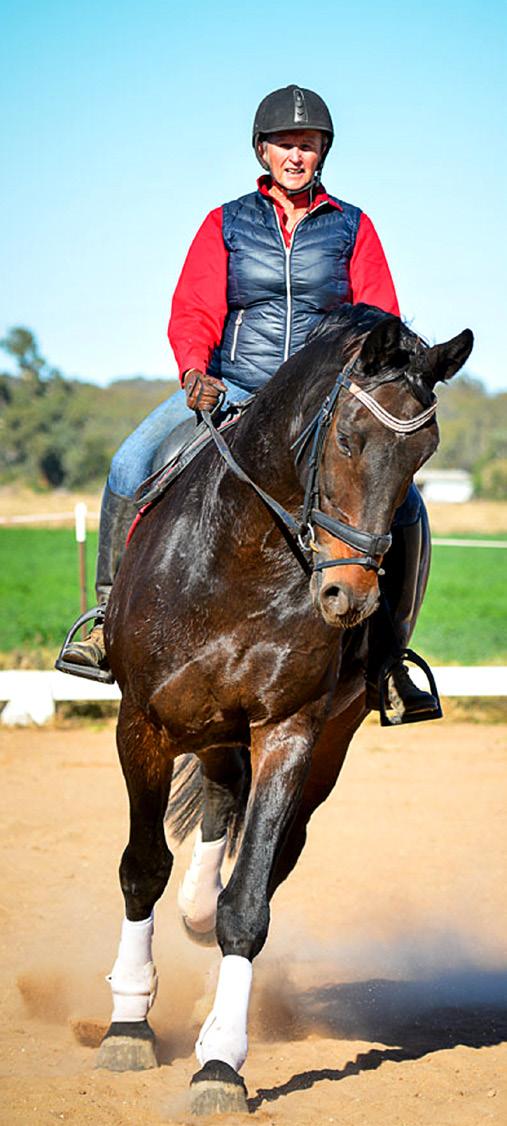
Interestingly, all three horses were previously ridden only by able-bodied riders - a true testament to their amazing adaptability. “The horse needs the ability to adjust,” says Katie. “Going from having an able-bodied rider on board to one who isn’t is like learning a new language for the horse, like someone who’s learning English but is only catching every third word.”
Meanwhile, Sue-Ellen tells me that Johno has become her ‘guide horse’. “Johno takes me from paddock to tack shed. He ground-ties while I saddle him up and when we’re ready, he leads me around the twisty path through the garden, out to the arena. He lines right up to the mounting block and stands stock still while I get on.”
Because of her lack of sight, Sue-Ellen only rides in the morning and only when it’s sunny. “When I’m riding I can feel the sun on the different sides of my face as I go around the arena,” she explains, “that’s how I know which direction I’m travelling in. Johno totally takes care of me every ride. I have such a deep connection with him. We’re meant to be on this journey together.”
On searching for ‘The One’, Emma says: “You need to be open-minded and realistic. It can be surprising, the matches you wouldn’t think would work, but do.” She then talks about ‘stepping stone horses’. “Get the one that suits what you need now, then as you progress you can look for the next, more advanced horse. Once you get to international level, you need something rock-solid with that wow-factor, or that look-at-me presence that you can’t miss even in the warm-up ring.”
While ability and movement are important for getting good marks, all three riders are unanimous on










